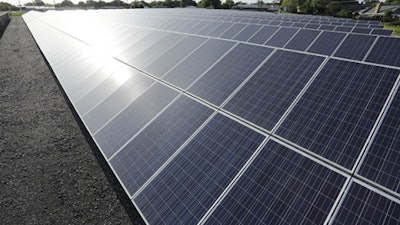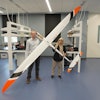
The University of Louisiana at Lafayette will establish an extension service to help the state meet objectives for reducing carbon dioxide and methane emissions.
The Louisiana C1 Extension Service will be part of UL Lafayette’s Energy Institute of Louisiana. The research and policy institute is focused on energy development and usage. It houses several centers that collectively address a variety of energy issues and processes, including petroleum resources, clean technology fuel, and power usage and conservation.
The institute’s Louisiana C1 Extension Service will serve as a “bridge between science and application,” said UL Lafayette’s Dr. Mark Zappi, the institute’s executive director. The focus will be on carbon dioxide and methane, greenhouse gases that absorb heat from the sun and warm the Earth’s atmosphere. Carbon dioxide and methane are often referred to as single carbon, or C1, chemicals.
“The Energy Institute of Louisiana is a research and technology development entity; its Louisiana C1 Extension Service, on the other hand, will provide a repository of information – and be a conduit for the exchange of information and technical assistance,” Zappi explained.
The C1 Extension Service will offer expertise in areas that include green manufacturing, power conservation, alternative energy, carbon sequestration, data management, business impacts, green product marketing and ecological modeling.
The aim is help Louisiana meet its goal of carbon neutrality by 2050, meaning all carbon dioxide emissions must be offset with equal amounts removed from the atmosphere. The state has also set intermediate goals of greenhouse gas reductions of 28% by 2025, and 50% by 2030.
“The Louisiana C1 Extension Service will be an avenue for the transfer of information and technical assistance among industry, government, policymakers and other stakeholders about methods for reaching emissions goals. Equally important will be sharing resources that help mitigate the impact on existing jobs – and potentially expand the job market,” Zappi said.
The twofold focus is essential, he added. Louisiana is among the top five states in the country for energy usage and greenhouse gas production; it is also among the top five states for energy production across a range of industries that “create hundreds of thousands of jobs.”
The exchange of research-based expertise about workforce demands and industry partnerships will be a key function of the Louisiana C1 Extension Service. It will also be a resource for information about industry training – including training geared toward blending new technologies with traditional energy processes.
“Louisiana’s move toward the reduction of C1 chemicals must be deliberately approached, balancing both economic and ecological impacts. That will require expertise and cooperation across a range of disciplines and entities, which the service will be positioned to facilitate,” Zappi said.
The C1 Extension Service will provide “resources and training for any person or entity with a stake in helping reduce Louisiana’s carbon footprint. That includes the Department of Energy, other universities, industry leaders – anyone with applicable information and methods,” he added.
UL Lafayette’s position as a leader in sustainable energy technologies and processes will ensure the University contributes heavily.
At the Energy Institute of Louisiana’s CLECO Alternative Energy Center, for example, researchers explore ways to generate power by using renewable resources. Solar thermal, biomass-fed gasification, and anaerobic digestion are among sustainable technologies examined at the alternative energy center.
UL Lafayette scientists also research renewable energy at the institute’s Photovoltaic Applied Research and Testing Laboratory, thanks to a solar farm on campus that holds 4,200 panels capable of producing 1.1 megawatts. The solar farm’s output powers much of the Louisiana Ragin’ Cajuns athletic complex.
The institute’s Chemicals and Fuels Development Center enables University researchers to study traditional and developing processes, with an emphasis on sustainable production of liquid fuels from biocrude, sewage sludge, cultured crops and other renewable feedstocks.






















